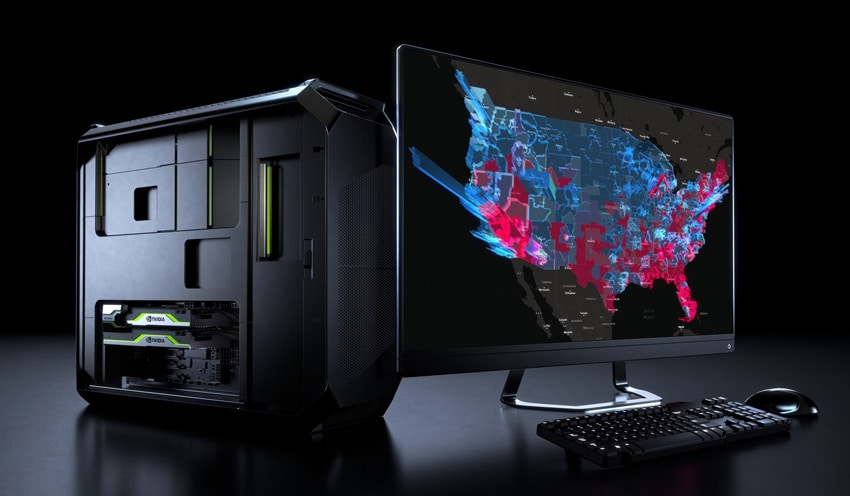
Today at the GPU Technology Conference, NVIDIA announced that it is working with the leading OEMs and system builders to help deliver new workstations aimed at data scientists, analysts, and engineers. The OEM and system builders are led by major names like HP, Dell, and Lenovo, building systems that integrate NVIDIA Quadro RTX GPUs and NVIDIA CUDA-X AI. These new technologies will allow businesses to make faster, more accurate predictions, while being more productive.
These new workstations are purpose-built for data analytics, machine learning and deep learning all of which need extreme computational power provided by NVIDIA Quadro RTX GPUs and NVIDIA CUDA-X AI. The workstations are ideal for fields such as finance, insurance, retail and professional services. The workstations can also leverage accelerated data science software, such as RAPIDS, TensorFlow, PyTorch and Caffe.
Features and benefits include:
- Dual, high-end Quadro RTX GPUs — Powered by the latest NVIDIA Turing GPU architecture and designed for enterprise deployment, dual Quadro RTX 8000 and 6000 GPUs deliver up to 260 teraflops of compute performance and 96GB of memory using NVIDIA NVLink interconnect technology. Quadro RTX-powered data science workstations provide the capacity and bandwidth to handle the largest datasets and compute-intensive workloads as well as the graphics power required for 3D visualization of massive datasets, including VR.
- Data Science software stack —built on the Linux operating system and Docker containers:
- NVIDIA CUDA-X AI —A collection of NVIDIA's GPU acceleration libraries to accelerate deep learning, machine learning and data analysis. CUDA-X AI includes cuDNN for accelerating deep learning primitives, cuML for accelerating machine learning algorithms, TensorRT for optimizing trained models for inference and over 15 other libraries. Together they work seamlessly with NVIDIA Tensor Core GPUs to accelerate the end-to-end workflows for developing and deploying AI-based applications. CUDA-X AI can be integrated into deep learning frameworks, including TensorFlow, PyTorch and MXNet, and leading cloud platforms, including AWS, Microsoft Azure and Google Cloud.
- NVIDIA RAPIDS —A set of GPU-accelerated libraries analytics for data preparation, traditional machine learning and graph analytics.
- Anaconda Distribution – With Anaconda, Inc., NVIDIA is providing Anaconda Distribution, an innovative way for data scientists to perform Python/R, data science, AI and machine learning.
- Enterprise ready —Tested and optimized in conjunction with workstation manufacturers to meet the needs of mission-critical enterprise deployments.
- Optional software support —Offers peace of mind with NVIDIA-developed software and containers, including deep learning and machine learning frameworks.
Availability
NVIDIA-powered systems for data scientists are available immediately from global workstation providers such as Dell, HP and Lenovo and regional system builders, including AMAX, APY, Azken Muga, BOXX, CADNetwork, Carri, Colfax, Delta, EXXACT, Microway, Scan, Sysgen and Thinkmate.
Sign up for the StorageReview newsletter

